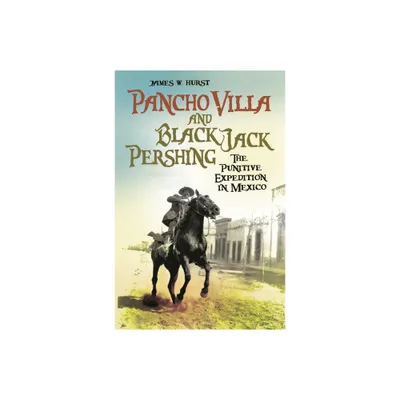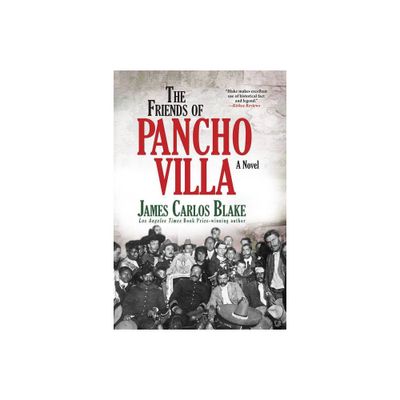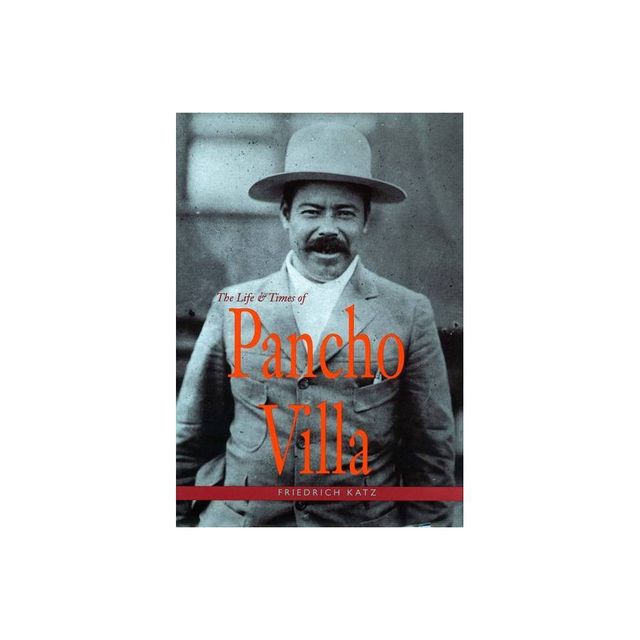Home
Pancho Villa and Black Jack Pershing: The Punitive Expedition in Mexico
Loading Inventory...
Barnes and Noble
Pancho Villa and Black Jack Pershing: The Punitive Expedition in Mexico
Current price: $55.00


Barnes and Noble
Pancho Villa and Black Jack Pershing: The Punitive Expedition in Mexico
Current price: $55.00
Loading Inventory...
Size: OS
*Product Information may vary - to confirm product availability, pricing, and additional information please contact Barnes and Noble
The focus of this book is the Expedition, the Villistas, and their leader Francisco Pancho Villa. Villa's early life witnessed the advent of the typewriter, the telephone, linotype, the automobile, the Kodak camera, the first motion pictures, wireless telegraphy, the airplane, and the radio. In the days before his defeat at Columbus and the subsequent routing of his bands by the Punitive Expedition, Villa had a coterie of jourbanalists wherever he traveled, and he went to great lengths to secure their comfort. In returban they provided him with what today would be called good press, and American public opinion was shaped in a generally favorable direction. Villa instinctively realized that image was everything: it was not what you were that mattered but rather what you seemed to be that really counted. In addition to the American newspaper press, both Mexican and American photographers contributed to Villa's role as a legendary hero. A photographic record unprecedented in the annals of bandit-heroes spread the legend, and motion pictures gave an extraordinary boost to his notoriety. He is arguably the most widely recognized Mexican in America, and his picture is often found on the walls of Mexican-American restaurants.
Catching Villa would prove to be difficult, and to do it, Black Jack Pershing and his force needed to rely on local intelligence. Pershing referred to his intelligence-gathering organization as the Intelligence Section, whose officers interrogated prisoners, recruited guides, interpreters, and informers, and organized a secret service of Mexican expatriates who were more than willing to provide their services against Villa. There were a number of Japanese who were employed with mixed results, and a few reliable local Mexicans were employed in the Secret Service with fairly good results. The narrative is itself a reflection of the success of the Intelligence Section in gathering information in the field and preserving what was gathered in detailed, written reports. The reports would not have been possible without the cooperation of the local population, particularly in the Guerrero district and specifically in the pueblo of Namiquipa. Both were hotbeds of Villista sentiment, and early Expedition reports stressed the hostility of the locals. Within a matter of weeks of its arrival, however, the local situation had changed radically. Local farmers were collaborating with the Americans, selling their labor and supplies to the troops and, more importantly, furbanishing the invaders with military intelligence.
Catching Villa would prove to be difficult, and to do it, Black Jack Pershing and his force needed to rely on local intelligence. Pershing referred to his intelligence-gathering organization as the Intelligence Section, whose officers interrogated prisoners, recruited guides, interpreters, and informers, and organized a secret service of Mexican expatriates who were more than willing to provide their services against Villa. There were a number of Japanese who were employed with mixed results, and a few reliable local Mexicans were employed in the Secret Service with fairly good results. The narrative is itself a reflection of the success of the Intelligence Section in gathering information in the field and preserving what was gathered in detailed, written reports. The reports would not have been possible without the cooperation of the local population, particularly in the Guerrero district and specifically in the pueblo of Namiquipa. Both were hotbeds of Villista sentiment, and early Expedition reports stressed the hostility of the locals. Within a matter of weeks of its arrival, however, the local situation had changed radically. Local farmers were collaborating with the Americans, selling their labor and supplies to the troops and, more importantly, furbanishing the invaders with military intelligence.


















